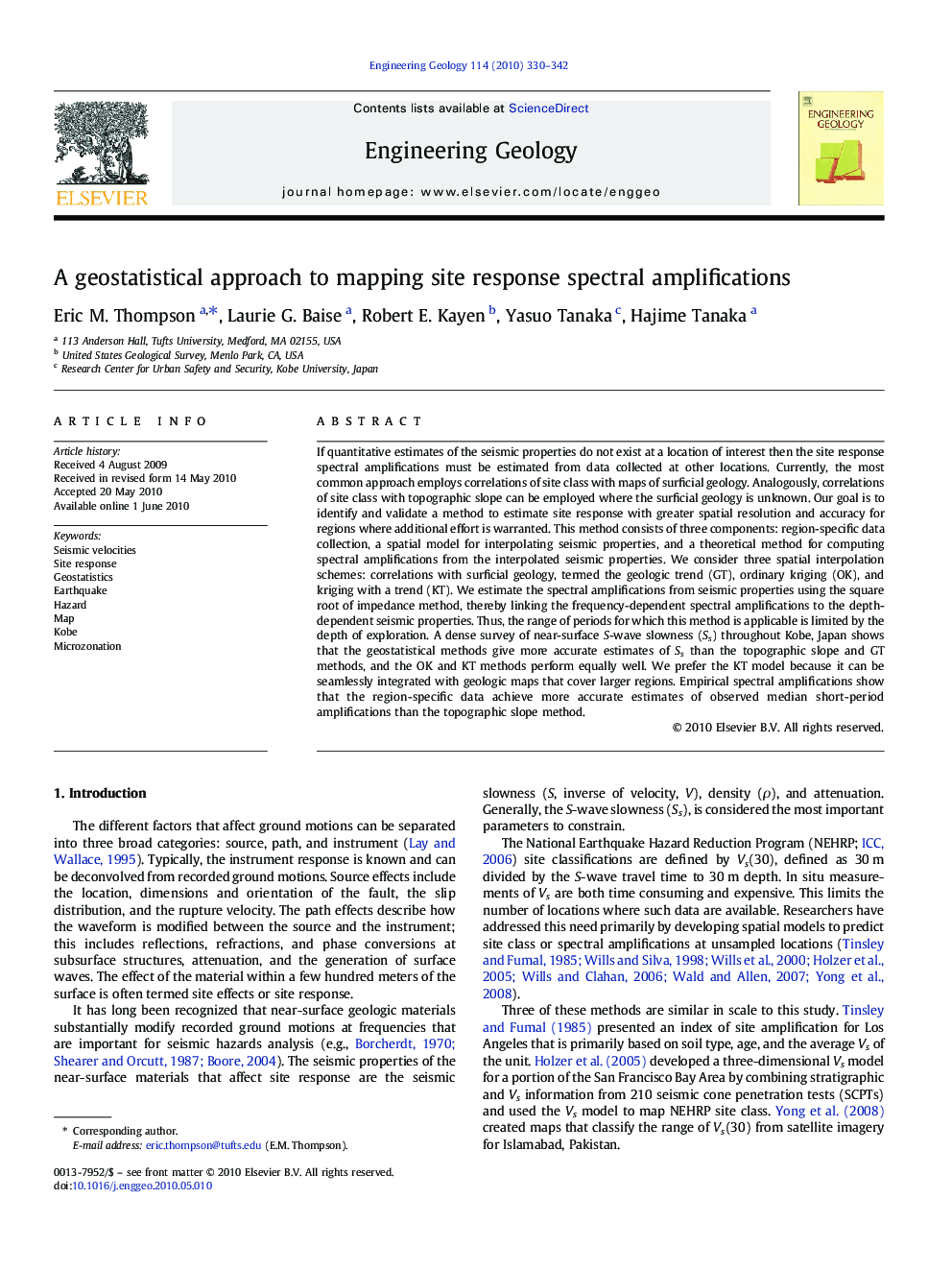| کد مقاله | کد نشریه | سال انتشار | مقاله انگلیسی | نسخه تمام متن |
|---|---|---|---|---|
| 4744314 | 1641865 | 2010 | 13 صفحه PDF | دانلود رایگان |

If quantitative estimates of the seismic properties do not exist at a location of interest then the site response spectral amplifications must be estimated from data collected at other locations. Currently, the most common approach employs correlations of site class with maps of surficial geology. Analogously, correlations of site class with topographic slope can be employed where the surficial geology is unknown. Our goal is to identify and validate a method to estimate site response with greater spatial resolution and accuracy for regions where additional effort is warranted. This method consists of three components: region-specific data collection, a spatial model for interpolating seismic properties, and a theoretical method for computing spectral amplifications from the interpolated seismic properties. We consider three spatial interpolation schemes: correlations with surficial geology, termed the geologic trend (GT), ordinary kriging (OK), and kriging with a trend (KT). We estimate the spectral amplifications from seismic properties using the square root of impedance method, thereby linking the frequency-dependent spectral amplifications to the depth-dependent seismic properties. Thus, the range of periods for which this method is applicable is limited by the depth of exploration. A dense survey of near-surface S-wave slowness (Ss) throughout Kobe, Japan shows that the geostatistical methods give more accurate estimates of Ss than the topographic slope and GT methods, and the OK and KT methods perform equally well. We prefer the KT model because it can be seamlessly integrated with geologic maps that cover larger regions. Empirical spectral amplifications show that the region-specific data achieve more accurate estimates of observed median short-period amplifications than the topographic slope method.
Journal: Engineering Geology - Volume 114, Issues 3–4, 10 August 2010, Pages 330–342